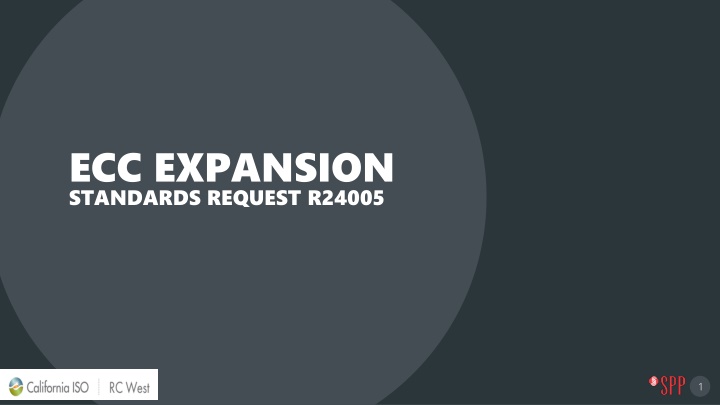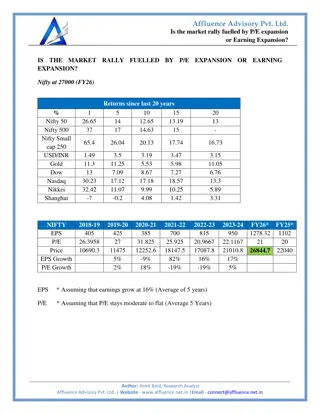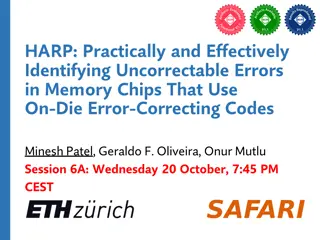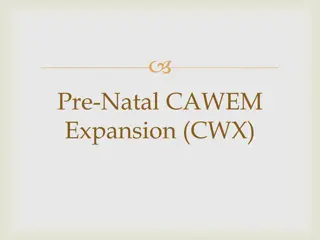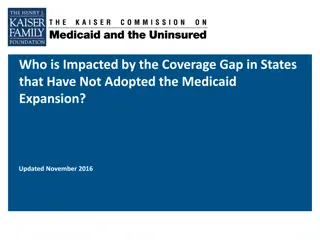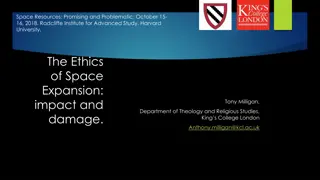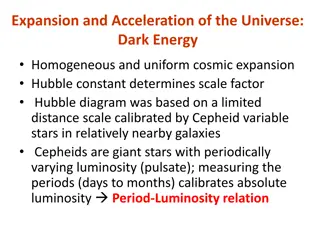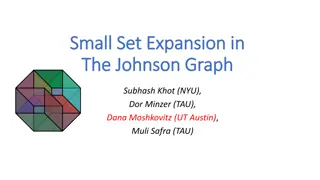ECC EXPANSION
The Western Interconnection lacks a standardized congestion management process, hindering equity and reliability coordination among RCs, BAs, and TOPs. Establishing a uniform framework is crucial as the interconnection evolves to meet market demands. This document discusses the limitations of the current UFMP, the role of the ECC Expansion Task Force, and proposals for enhancing congestion management.
Download Presentation

Please find below an Image/Link to download the presentation.
The content on the website is provided AS IS for your information and personal use only. It may not be sold, licensed, or shared on other websites without obtaining consent from the author.If you encounter any issues during the download, it is possible that the publisher has removed the file from their server.
You are allowed to download the files provided on this website for personal or commercial use, subject to the condition that they are used lawfully. All files are the property of their respective owners.
The content on the website is provided AS IS for your information and personal use only. It may not be sold, licensed, or shared on other websites without obtaining consent from the author.
E N D
Presentation Transcript
ECC EXPANSION STANDARDS REQUEST R24005 1
PROBLEM STATEMENT The Western Interconnection lacks a uniform congestion management process that each RC, BA, and TOP follow in coordination together to support equity and reliability in application for all systems and customers. As the western interconnection transitions to services requiring broader coordination with neighbors to facilitate organized markets and evolving generating fleets, establishing a standardized and efficient framework for addressing congestion management interconnection wide will be essential for equitability, and transparency. Eastern Interconnection adopted uniform congestion management procedures in 1999 WIUFMP was created in 1996 3
UFMP LIMITATIONS Limited to 5 qualified paths Difficult process to add qualified paths Limited effectiveness because UFMP only utilizes Phase Shifter movement and Tag curtailment Unequitable to exclude untagged flows (Gen to Load) Inefficient to use 5 paths to control SOLs across Western Interconnection A full list of UFMP limitations identified in March 2020, by the ECCWG and UFC, can be found in the following meeting materials: https://spp.org/documents/61719/20200303%20ufc_eccwg%20meeting%20minutes.pdf 4
ECC EXPANSION TASK FORCE The Enhanced Curtailment Calculator Working Group (ECCWG) is a technical advisory group providing guidance on the decisions affecting the sustainment and improvement of the webECC tool. ECCWG established ECC expansion Taskforce to evaluate and advise ECCWG on technical feasibility of expanding curtailment capability procedures capabilities from the Qualified Paths to include System Operating Limits ( SOLs ) and Interconnection Reliability Operating Limits ( IROLs ) constraints. A comprehensive curtailment approach was drafted by the ECCETF for both tagged and non-tagged transaction MWs, using a prioritization approach consistent with existing NAESB standards. Work in tandem with WECC Unscheduled Flow Mitigation Process( not replacing it). 5
ECC EXPANSION TASK FORCE WHITEPAPER The ECC expansion proposal is to issue relief obligations on a pro rata basis while respecting transaction priorities. The relief obligation will be based upon constraints defined in ECC to resolve or prevent SOL exceedances. Individual Impact (e-Tag, Dynamic Transfer, and Generation to Load GTL) is greater than or equal to a 5% Impact Threshold will be considered for relief obligations. A key component of whitepaper proposal is for Reliability Coordinators to lead congestion management. This change will allow a consistent interconnection-wide approach that will address equity, consistency, and reliability. 6
ECC EXPANSION PROPOSED ENHANCEMENTS TO ECC 7
INTERCONNECTION WIDE CONGESTION MANAGEMENT Flow based congestion management on SOLs/IROL s in real-time RC led process Standardized curtailment methodology Tag Curtailments Specific curtailment priority details need to be defined in NAESB Very similar to tag curtailments currently done in UFMP Step 4 but with TDF calculated to the SOL not a proxy path Gen to Load relief obligations (GTL) 8
GTL Calculate the impact of any BA serving its load within its boundary on transmission constraints All non-tagged generation impacts are captured by the GTL calculation Calculation is performed on a generator level utilizing the real-time MW submitted Any MWs used to support an external obligation (e.g. Tag) is subtracted from the real-time MW of the generators support the obligation 9
GTL CALCULATION METHODOLOGY GTL for every BA represents its impact of serving generation to load Any BA can be split into multiple Zones for more granularity and precision in specifying which MWs serve What load This same concept can be reversed by combining multiple BAs within a single market Current ECC functionality calculates GTL 10
GTL ADJUSTMENT FOR TAGS Any exports tags from a BA result in adjustment of generation. This is basically trying to separate MWs that serve the load within the BA/Zone and those that support the tag MWs supporting a tag don t count as part of GTL. They are accounted for on the tag impact Any import tags from a BA result in adjustment of load. This is basically trying to separate MWs served by the generation within the BA/Zone and those served by the tag Tag MWs serving a load don t count as part of GTL. They are accounted for on the tag impact Intra BA tags should also be adjusted from the BA and Load of the BA in order to reserve GTL impact to untagged component of the BA. 11
CURTAILMENT PROCESS Factor Calculation Based on system topology, various factors will be calculated every 15 minutes: Generation Shift Factors (GSF s) Load Shift Factors (LSF s) Transfer Distribution Factors (TDF s) Gen to Load Distribution Factors (GLDFs) Impact Calculation The impact calculation uses all the factors along with generator output/tag values to determine material contributions to the flow on a SOL Curtailment Process Implements NAESB curtailment rules (To be developed) Recommends which transactions for curtailment and issues GTL relief obligations 12
RELIEF OBLIGATION APPROACH Relief obligations will be issued on a pro rata basis while respecting transaction priorities Impact factors will be calculated directly on the SOL being controlled Proposed 5% impact threshold 13
ECC EXPANSION NEXT STEPS Two step approach 1. SPP and RC West coordinated effort on ECC model validation and constraint benchmarking. 2. Request a standard be drafted at NAESB 14
ECC BENCHMARKING EFFORT: RCWEST & SPP will work together on the benchmarking existing WebECC tool. Improve modeling in the existing WebECC tool to make sure all e-tags and dynamic transfer impacts are being calculated/modeled correctly. Impact of phase shifters are accounted correctly. Compare RT flows vs WebECC calculated impacts on top 20-30 constraints. Coordinate with BA s in west to improve the tag modeling and Generation to Load impacts in webECC. Compare webECC source/sink Transfer distribution impacts with other tools like TARA calculated impacts. Share RCWEST model and develop a plan to improve model if any modeling issues identified in the model. 15 Page 15
NAESB STANDARD Rules for event implementation Standardizes rules for establishing GTL Priority Standardizes curtailment rules Constrained path vs weakest link logic Event timing 16
ALEX WATKINS Southwest Power Pool Manager System Operation West awatkins@spp.org Office: 501-482-2430 Cell: 870-818-8566 17
RAJA THAPPETAOBULA Director Operations Engineering Services California ISO/RCWEST California ISO/RCWEST O: 916.608.1209 | C: 916.542.5340 250 Outcropping Way, Folsom, CA 95630 18
